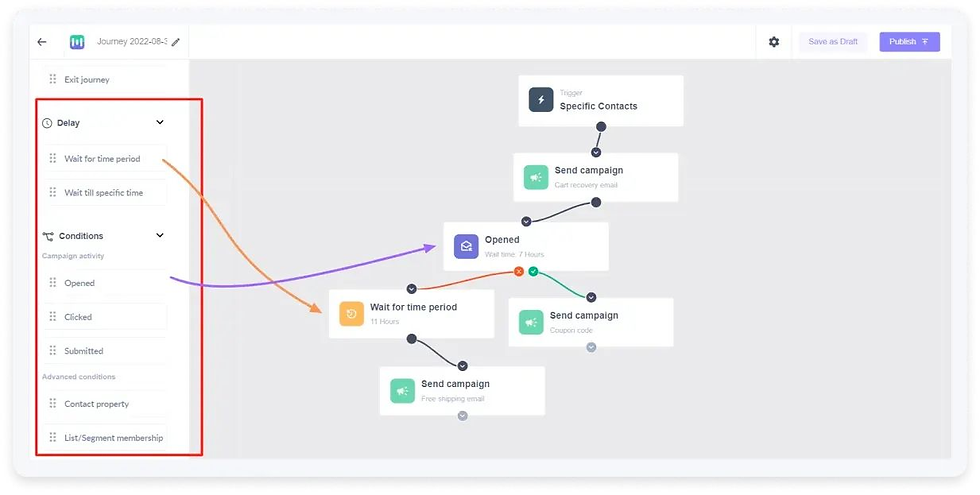Mastering Quick Lead Responses: Tools and Scripts to Achieve Under 5 Minutes
- Rifana Hameem
- Sep 14
- 4 min read
Updated: Sep 17
In today's fast-paced business environment, the speed of your lead responses directly impacts your sales outcomes. Statistics show that companies responding to leads within five minutes are 21 times more likely to engage their prospects than those who take longer. With the average lead response time at about 10 minutes, businesses that can reduce this to under five minutes can gain a substantial edge. This blog post discusses tools and scripts that will help you quickly respond to potential customers, ensuring you never miss a chance to connect.
The Significance of Lead Response Time
Lead response time plays a crucial role in converting inquiries into sales. Research indicates that if you respond to a lead in the first five minutes, your chances of converting that lead are 21 times higher than if you wait longer. For instance, if you receive 100 inquiries, responding within five minutes could potentially yield 21 conversions instead of just one.
This urgency resonates particularly in competitive fields where customers seek immediate solutions. A swift response shows your commitment to delivering excellent customer service and positions you as a trustworthy option in your industry.
Tools for Reducing Lead Response Time
1. Customer Relationship Management (CRM) Systems
A solid CRM system simplifies the management of leads. Platforms like HubSpot, Salesforce, and Zoho allow businesses to efficiently track customer interactions, set reminders, and automate communications. With automated follow-ups and lead scoring features, you can prioritize incoming leads based on their likelihood of converting.
For example, organizations using a comprehensive CRM can reduce their lead response times by at least 50%.

2. Chatbots and Live Chat
Integrating chatbots into your website can drastically enhance your response capabilities. These AI-driven tools engage customers instantly, providing instant answers to common questions and capturing lead information, even outside of regular business hours.
For more intricate inquiries, live chat features allow your sales personnel to engage in real-time conversations, ensuring immediate assistance for potential customers.

3. Email Automation Tools
Tools like Mailchimp and ACTIVE Campaign empower businesses to send prompt follow-up emails. By automating workflows, you can ensure that leads receive timely responses within minutes of their inquiries. According to studies, personalized emails can increase click-through rates by up to 14% and conversion rates by 10%, enhancing the customer experience significantly.

Scripts for Quick Lead Responses
1. Initial Response Script
Your first response is essential in establishing rapport. Here’s a simple and effective script you can use:
```
Subject: Thanks for Reaching Out!
Hi [Lead's Name],
Thank you for your inquiry! I’m excited to assist you with [specific need or question].
I’ll get back to you shortly with more information. Meanwhile, feel free to check out our website or let me know if you have any immediate questions.
Best,
[Your Name]
[Your Position]
[Your Company]
```
This script acknowledges the lead’s request and sets an expectation for timely follow-up, maintaining a friendly tone.
2. Follow-Up Script
If a lead does not respond to your initial message, consider this follow-up script:
```
Subject: Just Checking In!
Hi [Lead's Name],
I wanted to follow up on my earlier email regarding [specific need or question].
If you have any questions or need further information, I’m here to help!
Looking forward to your response.
Best,
[Your Name]
[Your Position]
[Your Company]
```
This brief message encourages engagement without being overbearing.
3. Closing Script
When ready to finalize the details, use this closing script:
```
Subject: Let’s Get Started!
Hi [Lead's Name],
I’m excited to see you’re interested in moving forward with [product/service]!
To get started, I’ll need [specific information or next steps].
Please let me know if you have any questions or need further assistance.
Best,
[Your Name]
[Your Position]
[Your Company]
```
This straightforward approach allows leads to take concrete next steps with ease.
Best Practices for Quick Lead Responses
1. Prioritize Your Leads
Not every inquiry is created equal. Use lead scoring to focus on those who are most likely to convert, ensuring your team addresses high-value leads promptly.
2. Train Your Team
Make sure your sales team understands the significance of quick responses. Regular training can help them grasp how to effectively utilize tools and communicate with leads swiftly.
3. Monitor and Optimize
Analyze your lead response times regularly to identify improvement areas. Utilizing analytics from your CRM can help track performance and streamline your processes.

Embracing Technology for Efficient Lead Responses
Technology significantly reduces response times. By adopting automation, AI, and data analytics, businesses can optimize their processes and engage leads quickly. Investing in effective tools not only enhances operational efficiency but also improves customer experiences, driving higher conversion rates.
Wrapping It Up
Achieving a lead response time of under five minutes is more than just an aspiration; it’s essential in a competitive landscape. By utilizing the right tools and scripts, you ensure that your leads receive swift and valuable communication.
Remember, every minute counts, and the quicker you engage, the higher your chances of converting leads into loyal customers. Embrace available technology, invest in training your team, and continuously refine your approach.
Arming yourself with these strategies will position you for success in mastering quick lead responses, ultimately leading to increased sales and customer satisfaction.



Comments